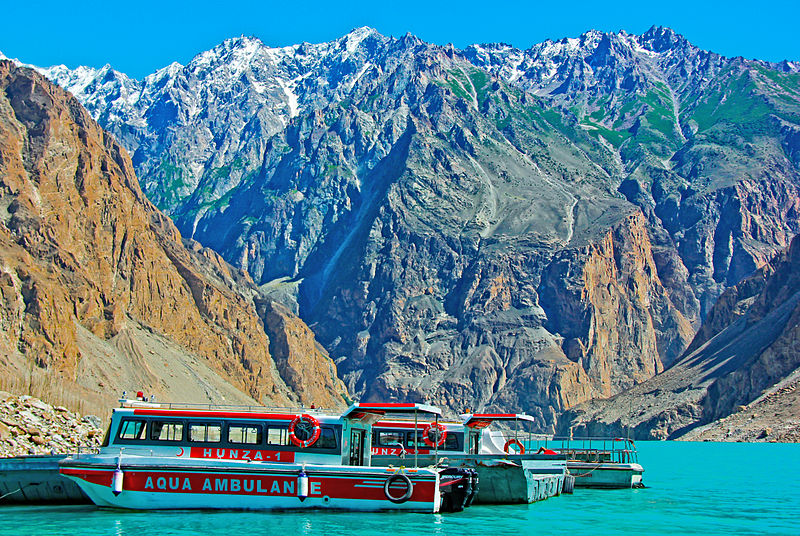Gilgit-Baltistan
Gilgit-Baltistan (Urdu: گلگت بلتستان, Balti: གིལྒིཏ་སྦལ་ཏི་སྟཱན or རྒྱལ་སྐྱིད་ སྦལ་ཏི་ཡུལ། rgyal skyid sbal ti yul), some time ago known as the Northern Areas,[10] is the northernmost authoritative region in Pakistan.[1] It fringes Azad Kashmir toward the south, the region of Khyber Pakhtunkhwa toward the west, the Wakhan Corridor of Afghanistan toward the north, the Xinjiang district of China, toward the east and upper east, and the Indian-directed province of Jammu and Kashmir toward the southeast. Gilgit-Baltistan is a piece of the Kashmir area that is questioned by India and Pakistan, alongside Azad Kashmir, Aksai Chin, the Shaksgam Valley, and Jammu, Ladakh, and the Valley of Kashmir.[1][11][12]
The region of present-day Gilgit-Baltistan turned into a different regulatory unit in 1970 under the name "Northern Areas". It was shaped by the amalgamation of the previous Gilgit Agency, the Baltistan region and a few little previous royal expresses, the bigger of which being Hunza and Nagar.[2] In 2009, it was allowed restricted independence and renamed to Gilgit-Baltistan by means of the Self-Governance Order marked by Pakistan president Asif Ali Zardari, which additionally planned to enable the general population of Gilgit-Baltistan. Notwithstanding, researchers express that the genuine power rests with the senator and not with boss pastor or chose assembly.[13][14] The number of inhabitants in Gilgit-Baltistan needs to be converged into Pakistan as a different fifth area and restricts joining with Kashmir.[15][16] The Pakistani government has rejected Gilgit-Baltistani calls for coordination with Pakistan because it would imperil its requests for the entire Kashmir issue to be settled by UN resolutions.[17]
Gilgit-Baltistan covers a zone of more than 72,971 km² (28,174 sq mi)[6] and is exceedingly uneven. It had an expected populace of 1,800,000 out of 2015.[2] Its capital city is Gilgit (populace 216,760 est). Gilgit-Baltistan is home to five of the "eight-thousanders" and to more than fifty crests over 7,000 meters (23,000 ft). Three of the world's longest ice sheets outside the polar areas are found in Gilgit-Baltistan. Tourism is for the most part in trekking and mountaineering, and this industry is developing in significance.